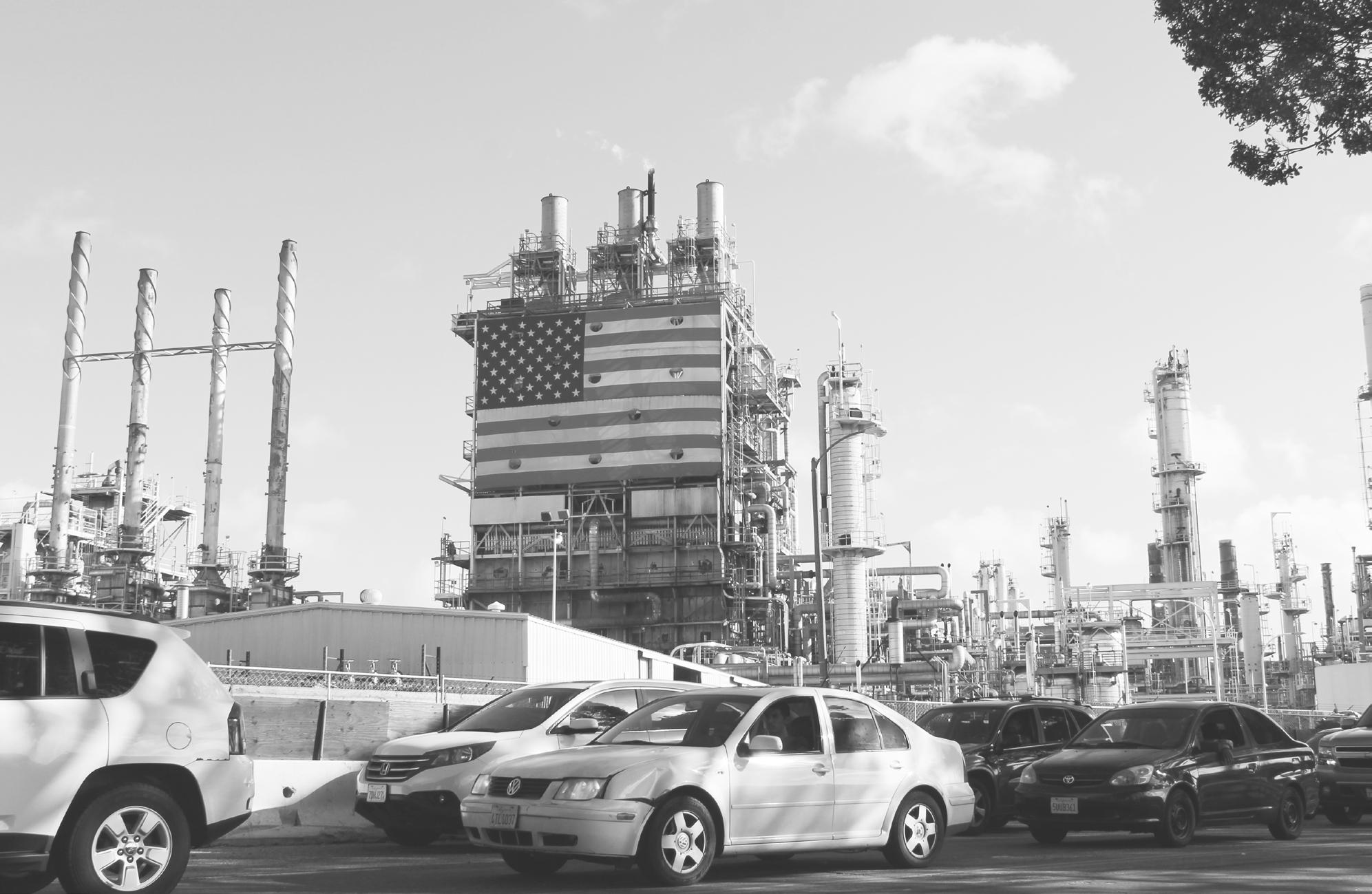
3 minute read
Refinery to Expand, May Pose Greater Health Risk
Andeavor has the OK to create the coast’s largest refinery near West Long Beach despite opposition from nearby cities and environmental groups.
By Crystal Niebla
Advertisement
Maurice Weiner noticed a dark substance gathering inside his West Long Beach home. He ran his finger on the walls and windows.
“That’s soot that’s flying and coming into our homes, not just in my area, [but] across Santa Fe [Avenue] all over in the westside,” said Weiner, 67, who lives less than three miles from the towering Andeavor — formerly known as Tesoro -- Refinery in Carson.
After a decade of living near multiple refineries, freeways and truck stations, he and his family started developing coughs. The doctor didn’t have good news for them.
“All of a sudden we have asthma, bronchitis,” he said. Farther down Santa Fe Avenue, 57-year-old Graciela Cortez lives about a mile and a half from Andeavor’s second oil refinery in Wilmington.
Her husband, Rafael, died from cancer at age 56. Among his many illnesses, Rafael suffered from asthma for his entire life, and Graciela said living in a polluted area for 13 years didn’t help his lungs.
Within the epicenter of Long Beach’s worst air, residents and local environmentalists worry that life there in the often-called “dead zone” will worsen as Andeavor, one of the largest oil refineries on the West Coast, is already on track to connect its two nearby facilities via new pipelines.
Andeavor’s project, known as the Los Angeles Refinery Integration and Compliance Project (LARIC), would invest $460 million to physically integrate and upgrade its Wilmington and Carson refineries, which already sit within two miles of Long Beach schools, parks and neighborhoods.
In May 2017, the South Coast Air Quality Management District (AQMD) approved a revised and final Environmental Impact Report (EIR) of LARIC, granting Andeavor the necessary permits to begin building its project the month after.
“I have approved these permits following extensive review of them by our staff and the U.S. Environmental Protection Agency,” said Wayne Nastri, the AQMD’s executive officer, in a press release in June. “This project will achieve an overall reduction in air pollution and will reduce impacts to the neighboring community.”
Andeavor says that it will also improve air quality by substantially reducing local emissions and upgrading refinery equipment.
Its previous website proposed shutting down its fluid catalytic cracking unit — a tool used for crude oil conversion — in Wilmington, potentially reducing greenhouse gases and harmful levels of nitrogen oxide, sulfur oxide and carbon monoxide.
However, the LARIC project revealed that at the same time volatile organic compounds (VOCs) will increase. VOCs, according to the Environmental Protection Agency (EPA), are emissions that include a variety of chemicals, some of which may have short- and long-term adverse health effects.
That’s why Julia May, a scientist and engineer with over 25 years of experience in monitoring pollution, believes that Andeavor’s claims that the project will lower emissions are misleading.
May said that along with smog production, VOCs may yield emissions more toxic than others such as benzene, a chemical known to cause cancer. up to 15 new pipelines.
“It’s very important to prevent and reduce VOC emissions and not increase them, especially in the South Coast that has very high levels of smog — extreme levels of smog — that cause all kinds of problems for health,” May said.
The neighborhoods bordering the project’s site, among Long Beach’s most diverse and poorest, have been known to have higher rates of cancer, low birth weights and respiratory issues for years.
At the westside’s Hudson Park, for example, the carcinogenic risk is about 1.8 times higher than at the eastside’s El Dorado Park, according to data analyzed from the AQMD carcinogenic risk map.
Left: Maurice Weiner, 67, sits across inhalers and allergy medication he and his family use daily at Windward Village in West Long Beach on March 16, 2017.

Hudson Park also has an asthma score of 80, while El Dorado Park scores 24 based on a zero to 100 percentile range, according to the state’s EPA mapping software.
Though the air has improved over the last decades, the South Coast air basin “still [has], essentially, the worst air quality in the nation,” AQMD spokesperson Sam Atwood said.
A state study from January 2017 reported that exposure to traffic and outdoor air pollutants cause asthma and can trigger asthma attacks, especially for poor communities.
With the merger, Andeavor will be “the largest refinery on the West Coast, and we’re in an already overly burdened community in terms of pollution,” said Taylor Thomas, a research and policy analyst at East Yard Communities for Environmental Justice (EYCEJ).
To connect Andeavor’s two refineries, 15 gas and oil pipelines will be routed underground and on South Alameda Street and East Sepulveda Boulevard, less than two miles from Elizabeth Hudson Elementary School and Admiral Kidd Park.
Andeavor’s history of repeated leaks, toxic burning of excess gases — better known as flares — and past refinery explosions are also raising more concerns.
In August 2016, the AQMD detected leaks at the Wilmington refinery above VOC emission limits. Three days later, a sulfur explosion occurred.
Nearby, the City of Carson considered suing the AQMD over safety concerns related to the Andeavor project, and Los Angeles Mayor Eric Garcetti had also issued concerns
Refinery continued on page 4










